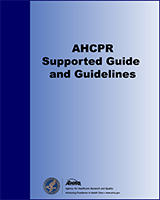NCBI Bookshelf. A service of the National Library of Medicine, National Institutes of Health.
McConnell JD, Barry MJ, Bruskewitz RC. Benign Prostatic Hyperplasia: Diagnosis and Treatment. Rockville (MD): Agency for Health Care Policy and Research (AHCPR); 1994 Feb. (AHCPR Clinical Practice Guidelines, No. 8.)
This publication is provided for historical reference only and the information may be out of date.
In an economic environment of unlimited resources, the selection of BPH treatment options might be based solely on choosing between competing physical and emotional risks and benefits, but the present realities of limited health care resources demand examination of the economic consequences of treatment selections as well.
Although limitations of present data on the long-term effectiveness of various treatment modalities prevent a detailed economic study using formal cost-effectiveness methodology, sufficient information is available to estimate short-term costs for the treatment modalities listed in Table 26: watchful waiting, finasteride, alpha blockers, balloon dilation, TURP, and open prostatectomy. Because the efficacy of balloon dilation and drug treatments is not indicated in the literature beyond 2 years, cost estimates are presented here in a 2-year timeframe for all modalities. Costs for nonsurgical therapies are probably overestimates. The model used assumes all patients who fail nonsurgical management will go on to TURP. In fact, some patients failing one medical therapy may try another drug or elect watchful waiting.
Table
Table 26. Average individual direct costs of treatment for BPH.
Costs associated with selection of treatment for BPH depend on both the method of primary treatment and the failure rate of the primary treatment with consequent need for retreatment. Costs of surgical treatments, as would be expected, are greater than costs of nonsurgical treatments. Watchful waiting and medical therapy, for example, as primary treatment modalities, do not cost a large amount of money. If, however, a significant number of patients being treated conservatively require retreatment -- that is, surgical treatment for BPH -- the cost obviously increases substantially. The cost estimates in Table 26 incorporate estimated treatment failure rates and need for retreatment (chapter 14).
Complications occur more often with surgical than with nonsurgical treatments. As noted for m , the cost estimates in the table include costs of complications such as urethral stricture and bladder neck contracture following surgical treatment. There are other complications related to TURP and open prostatectomy. Weis, Epstein, Huse, et al. (1993) analyzed Medicare claims data and found readmission costs to the Medicare program ranging from $2,456 for hemorrhagic disorders (approximately 3.0 percent of the surgical cases) to $11,863 for thromboembolic disorders (approximately 0.6 percent of the surgical cases). These costs, which affect a relatively small number of cases, are not included in the estimates in Table 26.
- Cost of Treatment - Benign Prostatic Hyperplasia: Diagnosis and TreatmentCost of Treatment - Benign Prostatic Hyperplasia: Diagnosis and Treatment
Your browsing activity is empty.
Activity recording is turned off.
See more...
